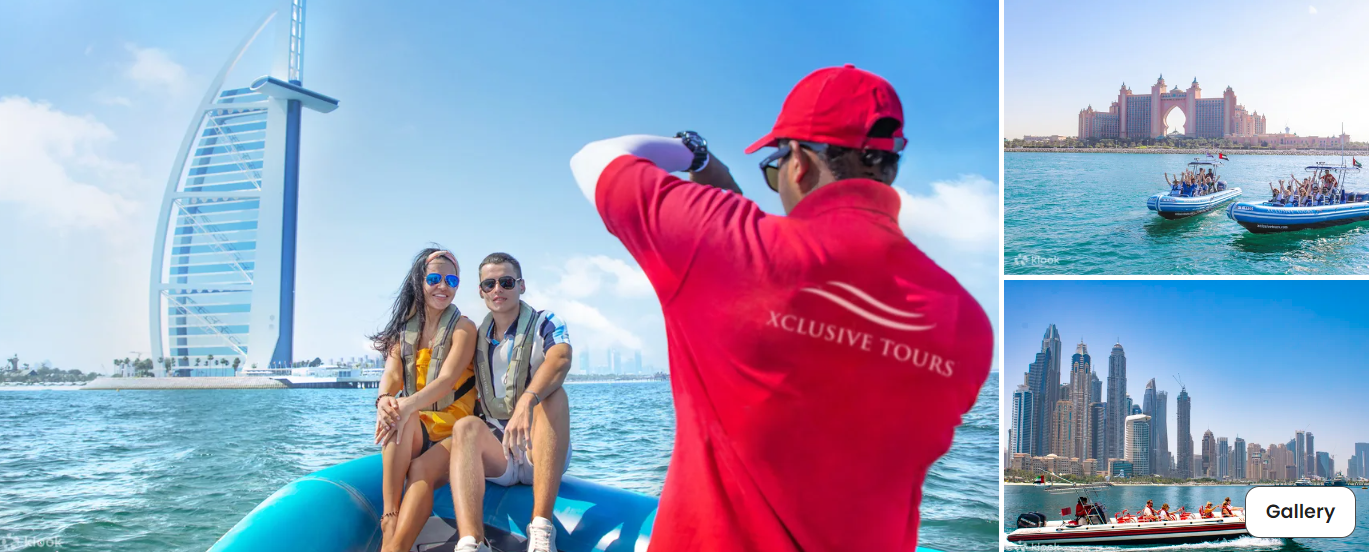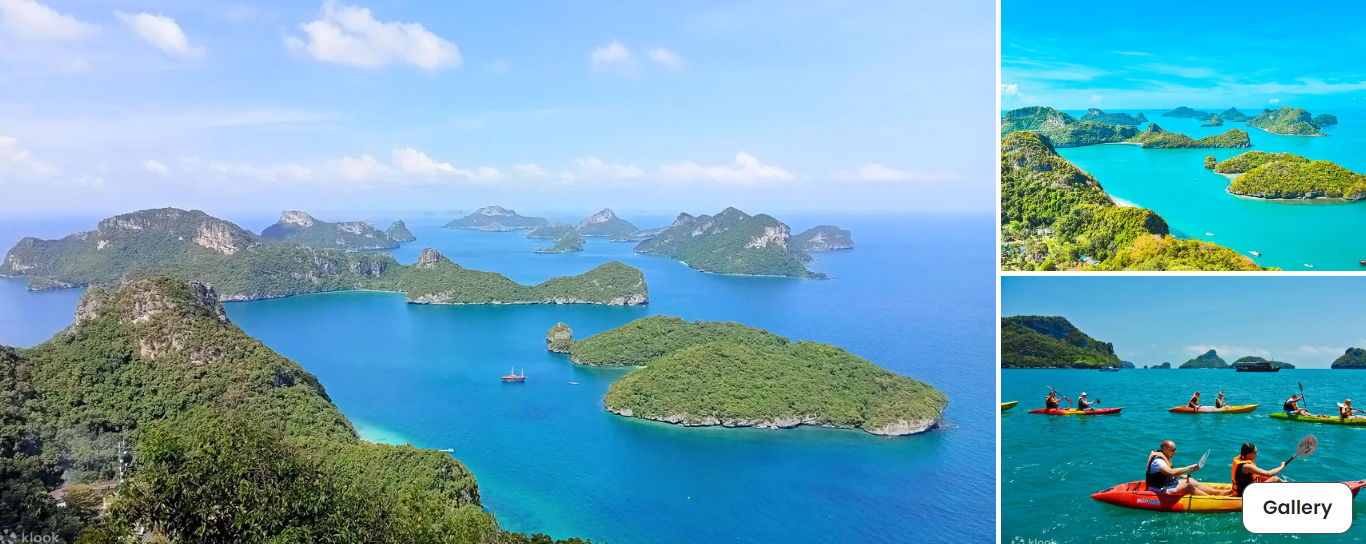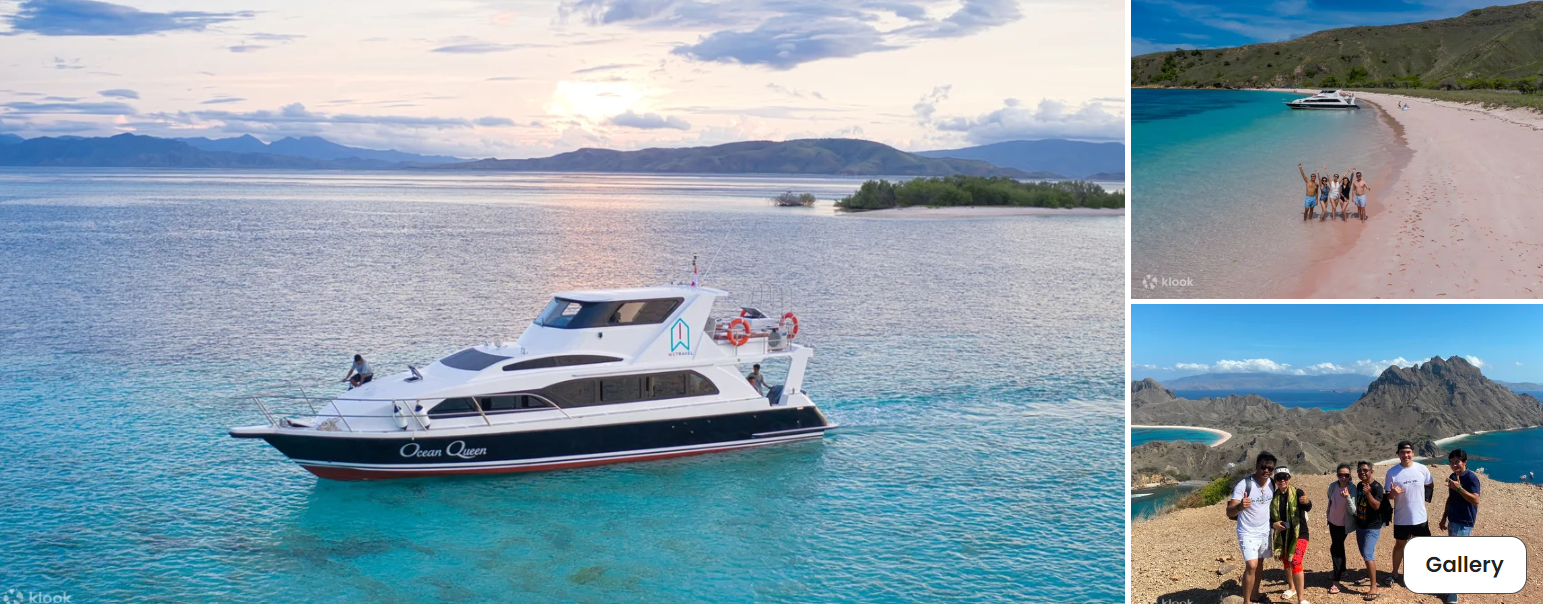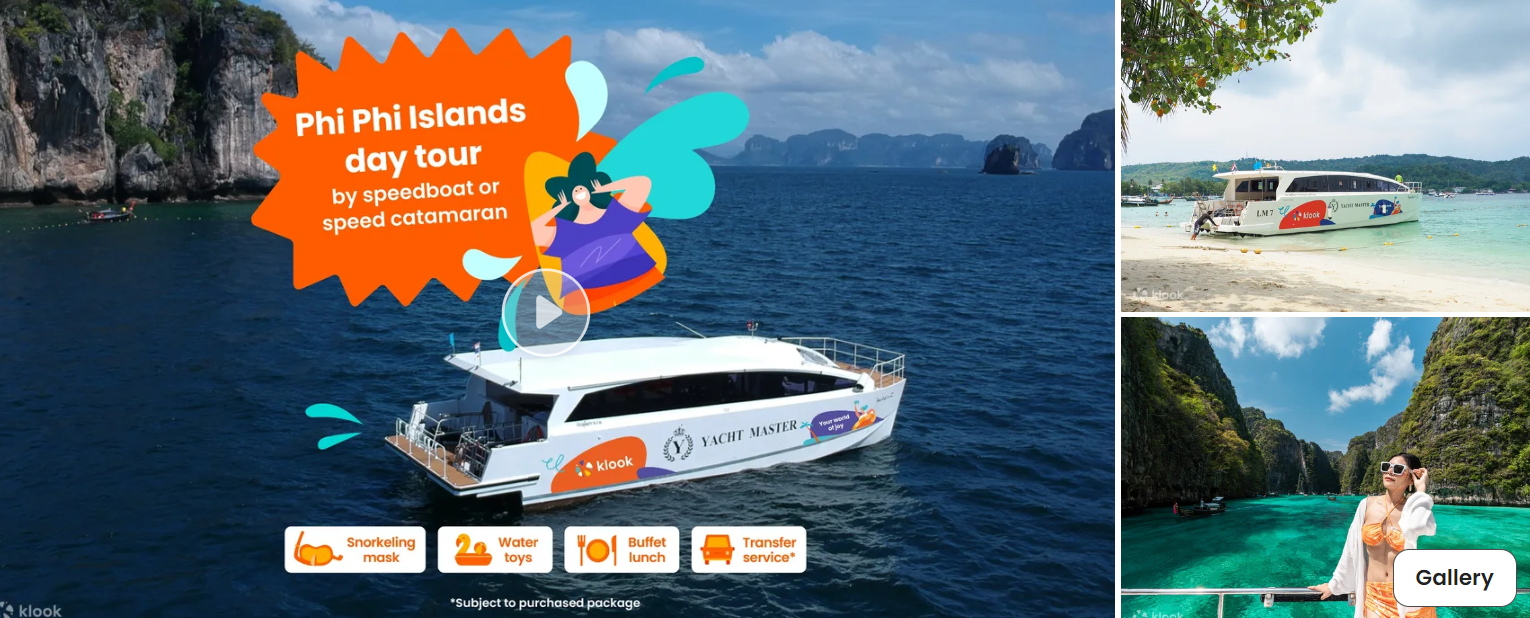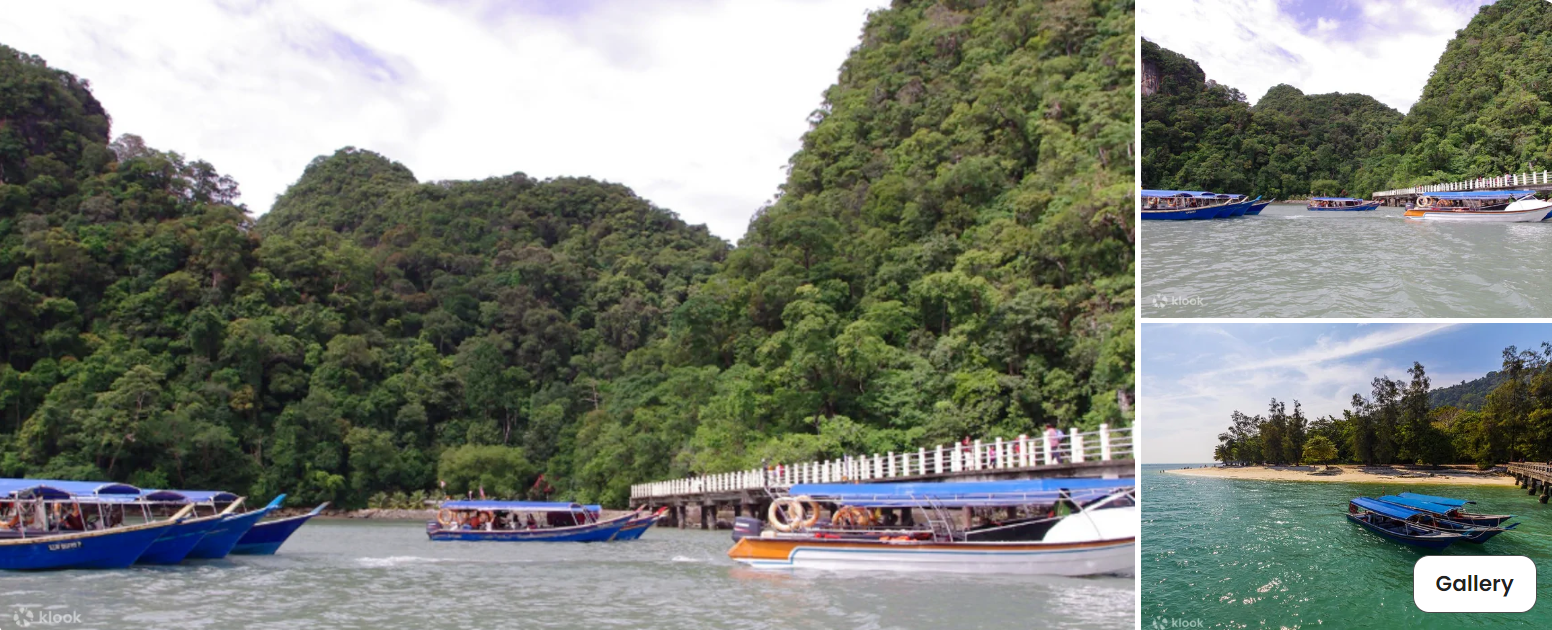Python is a high-level, interpreted programming language known for its simplicity, readability, and versatility. It has a rich ecosystem of libraries and frameworks that support a wide range of applications, from web development and automation to data science, machine learning, artificial intelligence, and more. Here's why Python has a bright future:
1. Simplicity and Readability
Python’s syntax is clean and easy to learn, making it a great language for beginners. Its design philosophy emphasizes code readability and reduces the complexity of writing programs. This simplicity leads to faster development cycles and is one of the reasons why Python is popular in educational settings.
2. Versatility and Wide Adoption
Python can be used for a variety of applications:
Web development: Frameworks like Django and Flask enable rapid development of web applications.
Data Science & Machine Learning: Libraries like NumPy, pandas, TensorFlow, and scikit-learn make Python the go-to language for data **** ysis, statistical modeling, and AI.
Automation: Python is often used to write scripts for automating repetitive tasks, making it popular in IT and operations.
Software Development: With tools like PyQt and Kivy, Python can also be used to develop cross-platform desktop applications.
3. Large Ecosystem of Libraries and Frameworks
Python has a vast repository of third-party libraries available through the Python Package Index (PyPI). These libraries allow developers to quickly implement complex functionalities without having to write everything from scratch.
4. Strong Community and Support
Python has a large, active, and vibrant community of developers. This means extensive documentation, tutorials, forums, and user-contributed packages. Community-driven development also ensures that Python remains updated and adaptable to new technologies.
5. Cross-Platform Compatibility
Python is cross-platform, meaning it runs on various operating systems, including Windows, macOS, and Linux. This flexibility ensures that developers can deploy their applications in a variety of environments without having to rewrite the code.
6. Growing Demand in Emerging Technologies
Artificial Intelligence (AI) & Machine Learning (ML): Python is the most commonly used language in AI/ML development. Its libraries and frameworks are highly optimized for data processing and building machine learning models.
Data Science and **** ytics: Python's strong data manipulation libraries (e.g., pandas, NumPy, and matplotlib) make it the preferred choice for data **** ysts and scientists. With the explosion of big data, Python is central to **** ytics.
IoT (Internet of Things): Python is increasingly used in IoT projects due to its ease of use, flexibility, and compatibility with hardware like Raspberry Pi.
7. Performance Improvements
While Python is not the fastest language due to being interpreted, the performance gap has been closing. Tools like PyPy (a just-in-time compiler) and Cython (which allows writing C extensions for Python) allow developers to speed up critical parts of their applications. Additionally, Python’s integration with other languages, like C or Java, helps improve performance when needed.
8. Corporate Support
Major tech companies like Google, Facebook, NASA, and Spotify use Python in various capacities. The backing of these organizations provides stability to the language and ensures it remains a valuable skill in the job market.
9. Ease of Integration
Python integrates well with other languages and technologies. For instance, it can call C/C++ libraries for performance-heavy tasks, interface with Java applications, or communicate with web services via APIs. This makes Python suitable for a wide range of applications and use cases.
10. Educational Use and Adoption
Python is frequently used to teach programming concepts at universities and coding boot camps. Its simplicity and broad use in real-world applications mean that new generations of developers are often introduced to it early in their careers.
11. Global Popularity and Career Opportunities
Python is consistently ranked as one of the most popular programming languages in the world, and job demand for Python developers remains high. It’s especially prominent in fields like data science, AI, web development, and automation.
Conclusion: The Future of Python
Python’s future looks bright because it continues to evolve with the demands of the technology landscape. Its role in fields like AI, machine learning, data science, and automation will only increase, and its simplicity and readability will continue to make it a favorite choice for both beginners and experienced developers. As long as it maintains its strong community support and adapts to emerging trends, Python will remain a central player in the programming world.
https://www.python.org/
1. Switch to Cleaner Fuels
Low-Sulfur Fuels: The International Maritime Organization (IMO) has implemented regulations to reduce sulfur emissions. Ships can use low-sulfur fuels (like Very Low Sulfur Fuel Oil - VLSFO) instead of traditional high-sulfur bunker fuel.
Liquefied Natural Gas (LNG): LNG is a cleaner alternative to conventional marine fuels as it significantly reduces emissions of CO2, sulfur oxides (SOx), and nitrogen oxides (NOx).
Biofuels: Some ships are beginning to use biofuels made from renewable sources like algae, waste oils, or plant-based materials, which have a lower carbon footprint.
Ammonia and Hydrogen: Though still in the experimental stage, ammonia and hydrogen have the potential to be carbon-free fuels when produced from renewable sources.
2. Energy Efficiency Measures
Hull Design & Maintenance: Modern hull designs, such as those with smoother surfaces and more hydrodynamic shapes, can reduce drag and fuel consumption. Regular cleaning and maintenance of the hull can also help maintain fuel efficiency.
Energy-saving Devices (ESDs): These include air bubble systems, ducts, and fins that improve the flow of water around the ship, reducing resistance and energy consumption.
Wind Propulsion Technologies: Technologies like sails, kite sails, and rotor sails harness wind energy to reduce the reliance on engines and reduce fuel consumption.
Energy-Efficient Engines: Newer, more efficient engines consume less fuel and emit fewer pollutants. Engine tuning, regular maintenance, and using low-load engines (engines optimized for slower speeds) can also improve energy efficiency.
3. Use of Scrubbers and Exhaust Gas Cleaning Systems
Scrubbers: These are devices installed on the exhaust stacks to remove sulfur oxides (SOx) and other pollutants from ship emissions. Scrubbers can clean exhaust gases, allowing ships to burn higher sulfur content fuel while meeting emission regulations.
Exhaust Gas Recirculation (EGR): EGR systems reduce NOx emissions by recirculating part of the exhaust back into the combustion chamber, reducing the formation of NOx during combustion.
4. Operational Efficiency and Best Practices
Slow Steaming: Reducing the speed of a ship, a practice known as slow steaming, reduces fuel consumption and emissions. Lower speeds also decrease the energy required to overcome hydrodynamic resistance.
Weather Routing: Using weather data and forecasting tools to optimize a ship's route can reduce fuel consumption and emissions by avoiding adverse weather conditions (e.g., headwinds) and taking advantage of favorable currents.
Port Time Optimization: Efficient port operations, such as reducing the time ships spend waiting at ports or idling, can also lower emissions. Strategies like cold ironing (using shore power while docked) allow ships to turn off engines while in port, reducing the use of auxiliary engines that produce emissions.
5. Carbon Capture and Storage (CCS)
Though still in the early stages, the concept of carbon capture and storage for ships involves capturing CO2 emissions from the exhaust gases and storing them safely, preventing their release into the atmosphere. This is still an emerging technology for the maritime industry.
6. Alternative Propulsion Technologies
Electric Propulsion: The use of batteries or fuel cells for electric propulsion is gaining attention, especially for short-sea shipping and ferries. These vessels rely on electricity stored in batteries or generated on board through renewable energy sources.
Hybrid Systems: Hybrid propulsion systems combine traditional internal combustion engines with batteries or fuel cells, allowing for reduced emissions during certain parts of the voyage (e.g., port entry, and docking).
7. Compliance with International Regulations
IMO 2020 Regulation: The International Maritime Organization (IMO) introduced the IMO 2020 sulfur cap, which limits the sulfur content in marine fuels to 0.5% globally (down from 3.5%). This has encouraged the use of low-sulfur fuels or the installation of scrubbers.
IMO’s GHG Strategy: The IMO has set a goal to reduce greenhouse gas emissions from shipping by at least 50% by 2050 (compared to 2008 levels). This includes measures such as reducing carbon intensity (CO2 per ton-mile) and encouraging the use of zero-emission fuels.
8. Research and Development of Innovative Technologies
Investment in R&D for new technologies, including carbon-neutral fuels, improved propulsion systems, and advanced emissions abatement technologies, will be essential to achieving long-term reductions in ship emissions.
Collaborative efforts between shipping companies, fuel suppliers, technology providers, and regulatory bodies can speed up the development of these innovations.
Reducing ship emissions involves a combination of technological advancements, operational efficiencies, and the use of cleaner fuels. The maritime industry is increasingly moving toward a sustainable future, driven by stricter environmental regulations and the growing demand for environmentally responsible practices. By adopting these strategies, the shipping industry can significantly reduce its environmental footprint and contribute to global efforts in tackling climate change.
https://www.goltens.com/pr...
If you suspect someone is having a heart attack, acting quickly is critical to saving their life. Here's a step-by-step guide on what to do in case of a heart attack:
1. Call Emergency Services Immediately (911 or your local emergency number)
Time is critical during a heart attack. The sooner medical help arrives, the better the chances of survival and reducing damage to the heart.
Make sure you provide the operator with clear details: the person’s symptoms, age, and condition. If possible, have someone else call while you ****** ist the victim.
2. Help the Person Stay Calm and Rest
Encourage the person to sit down and stay calm. Reassure them that help is on the way.
Avoid exertion, as physical activity can worsen the heart attack.
3. Chew Aspirin (If the Person is Not Allergic)
Give the person aspirin if they are conscious and not allergic to it. Aspirin helps thin the blood and can reduce the severity of a heart attack.
Dosage: A typical dose is 325 mg (one regular aspirin or four 81 mg baby aspirin). Let the person chew it slowly rather than swallowing it whole, as this speeds absorption.
4. Perform CPR if the Person Becomes Unconscious
If the person loses consciousness and is not breathing, start CPR immediately.
Chest Compressions: Place your hands in the center of the chest and push down hard and fast (about 2 inches deep at a rate of 100-120 compressions per minute).
If you're trained, provide rescue breaths after every 30 compressions (mouth-to-mouth or using a face shield if available).
If you're untrained or unsure, just perform hands-only CPR (chest compressions) until help arrives.
5. Use an AED if Available
If there’s an automated external defibrillator (AED) nearby, turn it on and follow the instructions. It can deliver a shock to restore a normal heart rhythm if necessary.
6. Monitor the Person’s Condition
Stay with the person, keep them as calm as possible, and continue to monitor their breathing and heart rate until medical help arrives.
Key Symptoms of a Heart Attack to Watch For:
Chest pain or discomfort (often a feeling of pressure, tightness, or squeezing)
Pain in the upper body (arms, back, neck, jaw, or stomach)
Shortness of breath
Nausea or lightheadedness
Cold sweat or dizziness
Remember that time is muscle: The quicker medical help is received, the better the outcome. Immediate action can prevent heart muscle damage and save lives.
Major Events That Influence Cryptocurrency Fluctuations:
Government Regulations and Policies:
Regulation of Cryptocurrencies: Government decisions on how cryptocurrencies are regulated can have a significant impact on their value.
For example:
Stricter Regulations: If governments impose stricter rules on crypto exchanges, taxation of crypto transactions, or AML/KYC (Anti-Money Laundering/Know Your Customer) requirements, it could create uncertainty and cause market volatility.
Clearer Regulations: On the other hand, clear, crypto-friendly regulations can help legitimize the market and increase adoption.
Central Bank Digital Currencies (CBDCs): The development and potential launch of government-backed digital currencies could challenge or complement existing cryptocurrencies.
Macroeconomic Events:
Interest Rate Changes: When central banks (such as the U.S. Federal Reserve) raise or lower interest rates, it can influence risk appetite in the financial markets. Cryptocurrencies are often seen as higher-risk ****** ets, so rate hikes (which make traditional investments more attractive) can lead to a decrease in crypto prices, while rate cuts may have the opposite effect.
Inflation: Cryptocurrencies like Bitcoin are often seen as a hedge against inflation, so high inflation may lead to an increase in demand for digital ****** ets. Conversely, stable or low inflation could reduce crypto’s appeal as an inflation hedge.
Technological Advancements:
Improvements in Blockchain Technology: Advances such as Ethereum's transition to proof-of-stake (PoS) or enhancements in scalability and transaction speed can lead to increased confidence in the technology, boosting the value of ****** ociated cryptocurrencies.
Security Vulnerabilities: On the flip side, if a major cryptocurrency hack or vulnerability is exposed, it could lead to panic selling and a temporary decline in the market.
Market Sentiment:
Investor Sentiment and Media Influence: Crypto markets are highly driven by sentiment. Positive news, like institutional investment (e.g., Tesla buying Bitcoin) or celebrity endorsements, can trigger surges in prices, while negative news (e.g., exchange hacks, fraud cases, or regulatory crackdowns) can lead to sharp declines.
Social Media Influence: Platforms like Twitter, Reddit, and others have shown that viral trends and influencer opinions can lead to massive fluctuations in the crypto market (e.g., the rise and fall of Dogecoin or Shiba Inu).
Geopolitical Events:
Political Instability: Geopolitical tensions, such as wars, trade disputes, or political crises, can make cryptocurrencies more attractive as a safe haven ****** et. This was seen with Bitcoin and Ethereum prices rising during times of geopolitical uncertainty, as investors looked for alternatives to traditional fiat currencies.
Legal Tender Adoption: If countries adopt Bitcoin or other cryptocurrencies as legal tender (like El Salvador did with Bitcoin), it could legitimize crypto ****** ets in the global economy and lead to a price surge.
Potential Impact of Trump’s Win on the Crypto Market:
Pro-Business and Deregulatory Stance:
Pro-Crypto Policy: Trump has often been pro-business and may take a more deregulatory approach towards cryptocurrencies, which could benefit the market. If his administration were to ease regulations on crypto exchanges, or if he advocated for lower taxes on cryptocurrency gains, it could lead to a surge in institutional and retail investment in digital ****** ets.
Positive Impact: A pro-business, pro-crypto environment could increase confidence in the market, leading to higher demand, especially from institutional investors looking for opportunities in a less regulated environment.
Example: When the U.S. Securities and Exchange Commission (SEC) or other regulators take a more hands-off approach to cryptocurrencies, it can allow businesses to innovate without fear of heavy penalties or restrictions, making it easier for crypto-related projects to grow.
Inflation and Debt Concerns:
Currency Devaluation: If Trump's economic policies led to higher government spending or increased national debt, it might prompt inflationary pressures. Many see Bitcoin and other cryptocurrencies as a hedge against inflation, so an increase in inflation or a weakened U.S. dollar under Trump’s policies could spur more demand for digital ****** ets, particularly Bitcoin.
Positive Impact: If inflation fears rise under Trump’s administration, more investors might flock to crypto as a store of value, especially in light of concerns about fiat currency devaluation.
Regulation of Stablecoins and CBDCs:
Trump’s administration might introduce policies around stablecoins and the potential launch of Central Bank Digital Currencies (CBDCs).
Stablecoins like Tether (USDT) or USD Coin (USDC) are linked to fiat currencies like the U.S. dollar. If Trump’s government creates favorable policies for stablecoins, their use could become more widespread, which might positively impact the crypto market.
CBDCs could compete with decentralized cryptocurrencies. If Trump were to support a U.S. CBDC in response to growing demand for digital currencies, this might lead to competition with private cryptocurrencies like Bitcoin and Ethereum.
Neutral to Negative Impact: Depending on how CBDCs are implemented, it could diminish demand for decentralized cryptos if people prefer government-backed digital currencies that offer stability and official backing.
Potential for Increased Adoption:
If Trump pushes for the legalization of crypto investments or allows more crypto-friendly taxation policies, it could help accelerate mainstream adoption in the U.S. This might attract more institutional investors, especially in a global economic environment where inflation and fiat currency risks are top concerns.
Positive Impact: More institutions and large financial entities entering the crypto ****** e, backed by clear regulatory frameworks, could fuel long-term growth in the crypto market.
Potential Anti-Crypto Sentiment:
On the flip side, Trump might take a more cautious stance on cryptocurrencies if he sees them as a threat to traditional financial systems or government control over monetary policy. His administration could adopt more restrictive measures for crypto exchanges, enforce more scrutiny on crypto transactions, or even ban certain activities related to crypto (though this is less likely given his pro-business approach).
Negative Impact: A crackdown on crypto could lead to a decline in market sentiment, particularly if regulations limit crypto trading, mining, or its use in everyday transactions.
Conclusion:
If Donald Trump were to win the 2024 election, the cryptocurrency market could experience both positive and negative impacts, depending on the specifics of his policies. On one hand, a pro-business and deregulated stance could encourage more investment in digital ****** ets, leading to a bullish market for crypto. On the other hand, potential regulatory restrictions, particularly concerning stablecoins or CBDCs, could create uncertainty and lead to short-term market downturns.
Ultimately, the direction of the market will depend on how Trump’s administration handles issues like taxation, financial regulation, and the role of cryptocurrency in the global economy. The general market sentiment will also play a crucial role, as crypto markets are highly reactive to both political and economic changes.
https://www.bbc.com/news/a...

US shares, Bitcoin hit record high and dollar soars on Trump win
The result could have a far-reaching implications for tax and trade policy, as well as economies around the world.
https://www.bbc.com/news/articles/c6246e3w935oOn October 28, 2023, the Maritime and Port Authority of Singapore (MPA) reported that 5 tonnes of oil had spilled into the sea off the coast of Changi, a region located on the eastern side of Singapore's main island. The MPA confirmed that the overflow has ceased, meaning the source of the spill was contained and no further oil was being released. While the precise details of the incident are still under investigation, here’s an overview of what likely happened, potential parties that could be responsible, and the environmental impacts of such a spill:
What Likely Happened:
The oil spill occurred in Singapore’s busy waters near Changi, which is a significant location for shipping and port activities.
The spill was reported to involve 5 tonnes of oil, a relatively small but still concerning amount, especially in a delicate marine environment like Singapore's.
The source of the spill could have been a maritime accident, such as a collision between ships, a leak from a vessel's fuel tank, or a malfunction in an oil storage or transport system.
The MPA stated that the overflow ceased, which typically means that whatever caused the spill (such as a leak or accident) was shut off or contained before more oil could be released into the water.
Who is Likely Guilty?
Determining guilt in such cases usually depends on an investigation by local authorities (MPA, police, or environmental agencies), but potential parties that could be held responsible include:
Shipping Companies or Operators:
If the spill was caused by a ship collision or a faulty fuel line, the company responsible for the ship or vessel involved could be found guilty. This could include:
Negligence in maintenance: If the ship’s operators didn’t properly maintain equipment or manage fuel systems.
Navigational errors: If a ship caused the spill due to a mistake in navigation or collision with another vessel or structure.
Failure to follow safety procedures: If safety protocols for handling or transferring oil were not followed.
Port Facilities or Oil Operators:
If the spill occurred during oil transfer operations at the port, facilities managing oil storage or cargo handling could be held responsible for not properly securing tanks or pipelines, leading to a spill.
Human Error or Mechanical Failure:
In some cases, spills are the result of a combination of human error or equipment malfunction, such as a failure to properly shut off valves during an operation or faulty equipment that causes an overflow.
Given that Singapore has stringent regulations governing oil spills and maritime operations, the investigation will likely focus on identifying whether there was negligence or non-compliance with environmental and safety regulations.
Impact on the Environment:
Marine Life and Ecosystems:
Even though 5 tonnes may sound small in comparison to large-scale spills, it can still have a significant impact on marine life, especially in a sensitive area like Changi. The spill could affect local fish, coral reefs, marine birds, and mollusks.
Oil is toxic to marine organisms. It can contaminate food sources, coat the feathers of birds and the fur of marine mammals, and poison fish and other sea creatures through ingestion and absorption.
Smothering: Oil slicks can cover and suffocate the marine plants and animals that are vital to the food chain. Coral reefs, in particular, are highly sensitive to oil contamination and can be severely damaged, leading to long-term ecological damage.
Water Quality:
The oil could degrade water quality, making it unsafe for both marine life and humans. It could lead to long-lasting contamination of the marine ecosystem, especially if the oil reaches shorelines or beaches.
Air Pollution:
In some cases, when oil is not properly cleaned up or contained, it can evaporate and release toxic fumes, leading to air pollution around the affected area.
Cleanup Challenges:
The spill will require extensive cleanup operations. While the MPA has not reported the full scope of the efforts, cleaning up even a small spill like this can be difficult and costly. Oil slicks are challenging to remove, and they often require specialized equipment and techniques, such as booms (floating barriers), skimmers (to remove oil from the water’s surface), and dispersants (chemical agents that break down the oil).
The effectiveness of the cleanup efforts will depend on weather conditions, the spread of the oil, and the speed at which the oil is contained.
Long-Term Environmental Consequences:
Persistent contamination of the marine environment, such as damage to coral reefs or mangrove ecosystems, could have long-lasting effects on local biodiversity.
While some marine species can recover from oil contamination, the recovery time can take years, and the damage to ecosystem services (e.g., fisheries, tourism) can have economic implications for the region.
Next Steps and Consequences:
Investigation:
The MPA and other authorities will likely conduct an investigation to determine the exact cause of the spill, who is responsible, and the extent of the damage. If negligence is found, penalties may be imposed, including fines or compensation for the cleanup costs.
Legal Action:
If a party is found to be at fault, they could face legal action, including fines or lawsuits for violating environmental protection laws or failing to adhere to safety regulations.
Preventative Measures:
This incident may prompt stricter regulations or safety measures for oil-handling procedures in the area, especially for maritime operations around Singapore’s busy port. It could also lead to increased monitoring of ships and oil terminals.
Conclusion:
While the 5-tonne oil spill off Changi on October 28, 2023, might seem small, it still poses serious risks to the environment, especially to marine ecosystems in the region. The investigation will determine who is at fault, and depending on the findings, the responsible parties could face legal or financial penalties. The spill’s impact on local marine life and water quality will likely prompt an ongoing cleanup effort to mitigate environmental damage.
https://www.theonlinecitiz...
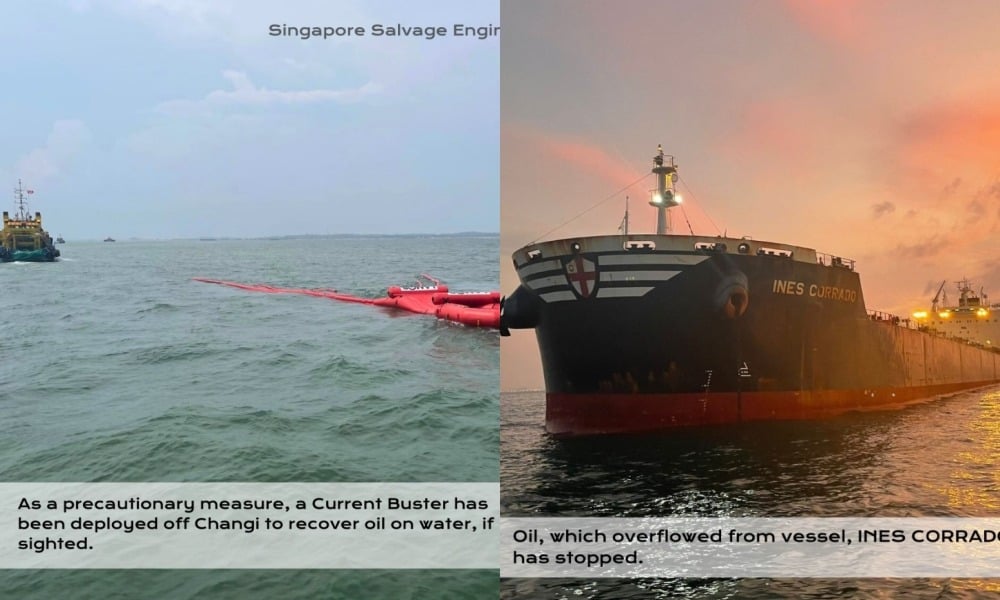
MPA reports 5 tonnes of oil spilled off Changi on 28 Oct; Overflow has ceased - The Online Citizen
The Maritime and Port Authority of Singapore (MPA) updated on the oil spill incident off Changi at 5.40pm on 28 October. During a bunkering operation with the Bahamas-flagged bulk carrier INES CORRADO, around five tonnes of oil overflowed into the sea. As of 8am on 29 October, no oil was spotted, an..
https://www.theonlinecitizen.com/2024/10/29/mpa-reports-5-tonnes-of-oil-spilled-off-changi-on-28-oct-overflow-has-ceased/In the event of a ship collision at sea, follow these steps to ensure safety and manage the situation effectively:
Assess the Situation:
Determine the extent of damage and the condition of the vessel and crew.
Check for immediate threats such as fire or flooding.
Alert the Crew:
Sound the general alarm to alert the crew and initiate emergency procedures.
Assign specific roles and responsibilities to crew members, such as damage control, evacuation, or communication.
Communicate:
Use the ship’s communication systems to notify nearby vessels and the appropriate maritime authorities, such as the coast guard or rescue services.
Provide details about the incident, location, and the extent of the damage.
Stabilize the Vessel:
If possible, take measures to stabilize the vessel, such as closing watertight doors or using pumps to manage flooding.
Adjust the ship’s course and speed to reduce the risk of further damage or instability.
Prepare for Evacuation:
If the situation is severe and the vessel is at risk of sinking, prepare for evacuation.
Deploy lifeboats, life rafts, and other survival equipment according to the emergency plan.
Ensure that all crew and passengers are accounted for and know how to use the safety equipment.
Conduct Damage Control:
Implement damage control procedures to minimize further damage and manage any leaks or breaches.
Follow established protocols for handling fires, flooding, and other emergencies.
Document the Incident:
Record the details of the collision, including the time, position, and circumstances of the incident.
Collect witness statements and evidence for later investigation and reporting.
Follow Up:
Once the immediate danger has passed, conduct a thorough ***** sment of the damage and the ship’s condition.
Cooperate with investigators and authorities to understand the cause of the collision and prevent future incidents.
Taking these steps will help manage the immediate aftermath of a ship collision and ensure the safety of everyone on board.
1. Nautor's Swan 78
Length: 23.98 meters
Design: A luxurious performance cruiser, the Swan 78 is known for its excellent sailing capabilities combined with elegant interiors. Designed by German Frers, it features a luxurious deck layout and high-quality materials.
Features: Twin rudders for better control, carbon fiber mast, advanced sail handling systems, and an interior that can be customized to the owner's preference.
2. Oyster 885
Length: 27.08 meters
Design: The Oyster 885 is a semi-custom sailing yacht offering a perfect blend of performance and comfort. With a focus on bluewater cruising, it’s designed to be sailed easily by a small crew.
Features: Large cockpit, luxurious cabins, a luxurious saloon, and state-of-the-art navigation equipment. The deck is optimized for both performance and leisure.
3. Wally 93
Length: 28.3 meters
Design: The Wally 93 is a sleek, modern yacht designed for speed and style. It combines advanced naval architecture with a minimalist design ethos, making it one of the fastest yachts in its class.
Features: Carbon composite hull, high-tech sail systems, and a minimalist yet luxurious interior that focuses on maximizing and natural light.
4. Southern Wind 96
Length: 29.3 meters
Design: A high-performance cruiser, the Southern Wind 96 is designed for long-range sailing. It blends luxury with robust build quality and advanced sailing technology.
Features: Carbon fiber rig, a hybrid lifting keel, large social areas on deck, and an interior that emphasizes comfort and style, suitable for long voyages.
5. Contest 85CS
Length: 25.9 meters
Design: Built by Dutch yacht builder Contest Yachts, the 85CS is a high-end cruiser designed for global cruising with a small crew. It offers a good balance of sailing performance and luxury.
Features: High-tech sail plan, customizable interior layouts, advanced navigation systems, and a deck layout optimized for both safety and comfort.
6. Baltic 85
Length: 25.9 meters
Design: The Baltic 85 is a lightweight, high-performance yacht known for its speed and agility. It’s designed for those who prioritize racing performance without compromising on luxury.
Features: Carbon fiber hull, retractable keel, customizable interiors, and advanced sail handling systems for optimized performance.
Visual Features to Look For:
Sleek Hull Designs: Most of these yachts feature sleek, hydrodynamic hulls designed for speed and stability.
Luxurious Interiors: Expect high-quality materials like teak, carbon fiber, and polished metals. The interiors are typically luxurious, with a focus on comfort and luxury.
Advanced Sail Systems: These yachts come equipped with state-of-the-art sail systems, including carbon masts and high-performance sails, to ensure optimal performance.

Revealed: Why athletes have to wear such tiny Speedos to compete in the Olympics (according to pro Tom Daley!) after swimmers set hearts racing in Paris with sk..
Tom Daley revealed that there is a very practical reason that swimmers appear in next to nothing trunks at the Olympics and it isn't for physique enhancing purposes.
https://www.dailymail.co.uk/femail/article-13724075/Tom-Daley-reveals-athletes-wear-tiny-Speedos-compete-Olympics-swimmers-set-hearts-racing-skintight-trunks.html?ito=social-facebook-news&fbclid=IwZXh0bgNhZW0CMTEAAR2XfM-lClHWi3BtpI01QuQy_lfA0d89KDRbAwXZ7Y2AOY7siFRprLOGcqU_aem_xQOzlF57rbLGnA_TM6AqpAHighlights
Fantasea Avalon is one of Sydney’s best purpose-built whale watching vessels combining high speed with 2 levels of viewing decks on board!
It only takes 15 minutes from Circular Quay to get you out into the ocean maximising your time whale watching.
Enjoy your whale watching cruise from **** ious wrap around decks over 2 levels.
Convenient departure from both Circular Quay and Darling Harbour!
https://prf.hn/l/Oqy40oz
Phi Phi Sunrise Speedboat Tour with Maya Bay - Avoid The Crowds
Highlights
Visit Maya Bay for 1 hour at sunrise, before the big crowds arrive
Enjoy the comfort of an all-inclusive shared speedboat tour in Phi Phi
Have amazing snorkel experiences with sharks, fish and beautiful corals
Discover Phi Phi's monkeys in their natural habitat
Swim at the beautiful Pileh Lagoon
What to expect
On this guided speedboat tour you will visit Maya Bay, famous from the movie “The Beach” with Leonardo DiCaprio as the first stop right when it opens at 7 AM. You will be one of the first boats to arrive and enjoy this magical beach without the big crowds. Visit Pileh Lagoon, the perfect spot to cool down and take a swim in the turquoise waters. Discover the white sand beaches and azure waters on a visit to Bamboo Island, a tiny island where you can enjoy the beauty of paradise in peace. (Only with full day option) Marvel at one of the main attractions at Phi Phi Leh, Viking Cave. Although boats are not allowed to go inside the cave, all the boat tours stop here close enough to take pictures.
https://prf.hn/l/3Pp198n
Marina, Atlantis Palm, and Burj Al Arab Speedboat Tour
Highlights
Go on a sightseeing expedition over the water with a cruise to Palm Jumeirah and Palm Lagoon in Dubai
Circle the Palm Jumeirah to admire the picturesque vision of the Atlantis, The Palm from the sea
Take panoramic photos of the Burj Al Arab and Dubai skyline from the boat, and get a full view of the dramatic coast
Learn about the landmarks via live onboard commentary from an English-speaking guide
Avoid the hassle and save time with the skip-the-line access to the speedboat!
What to expect
This thrilling trip departs from the famous Dubai Marina. The host has an office on the Marina where a red carpet awaits to greet you. Once you have checked in, your guide will run through a safety briefing, so please arrive 15 minutes early. Choose from a 90-minute full tour of the sights which will cruise through the marina up to Jumeirah Beach.
From here, this unforgettable tour is full of great views and fun facts of all the coastline hotels, beaches, and of course Dubai's top landmarks, including Dubai Marina, The Dubai Eye Wheel, Jumeriah Beach, The Harbour Project, The Huge Palm and its hotels, The Atlantis, Dubai Rulers Private Island, and The Burj Al Arab.
https://prf.hn/l/zpQzgRl
Angthong Marine National Park by Speedboat
Highlights
Admire the magnificent views of the sea, meet friendly crews and professional guide
Enjoy an experience canoeing through the magnificent clear waters with family or friends and delight in the soothing sounds of the sea’s rippling waters
Be up close and personal with tropical marine while snorkeling
Revel in the atmosphere of the nature, clear your mind and enjoy of relaxation
What to expect
Angthong National Marine Park or well-known as 42 islands is one of the most famous day trip in Koh Samui. It is for travelers who enjoy doing the variety of activities which are snorkeling, sightseeing, and kayaking.
There is an amazing emerald saltwater lagoon surrounded by the caves with spectacular view that would be surprised you by nature. Another fun activity that you must do on this trip is Kayaking, explore around the park by going along the caves and take your joyful time to see the school of fishes, coral reefs, and sea flowers through the clear water. Or, even visiting the park and sunbathing on the beach after lunch is also a nice relaxing time, and if you still have enough energy then climbing up to the second view point to take a fantastic view. You can’t miss this trip on your visiting Koh Samui!
https://prf.hn/l/9OXk4Y1
Highlights
A day trip to Hong Island in Krabi is the ultimate relaxation: peaceful, secluded, and quiet
Snorkel in clear waters of a secluded lagoon and explore the islands' abundant marine life
Hong Islands have National Park status and will give you a chance to see pristine natural scenery
Leave your worries behind and let a powerful speedboat take you on an amazing day trip to Krabi's hidden paradise
What to expect
Explore Thailand's island paradise in Krabi with a visit to Hong Islands. Belonging to the National Marine Park, this stunning four-island archipelago is just twenty minutes away from Ao Nang by speedboat. With a mesmerizing backdrop of Phang Nga Bay, the islands have rightfully earned their ******* le as some of the most beautiful in Thailand. Hong is literally translated as "room" from Thai — and for a reason: the islands are secluded and in the centre is a lagoon completely surrounded by cliffs. You will be able to enjoy complete privacy, crystal clear water and sunny sandy beaches away from crowds of tourists so you can truly relax.
https://prf.hn/l/mVRqmNm
Highlights
Ride the comfortable speedboat to visit 6 most popular spots in Komodo National Park!
Hike to top of Padar Island, snorkeling with manta and spot the famous komodo dragon
Everything you need including lunch, snorkeling equipment and floaties are available on board
Hassle free experience with hotel pick up and drop off included
Explore Pink Beach
Hiking to Padar Island
Spot Komodo Dragon
Hiking to Padar Island
Spot Komodo Dragon
Snorkeling at Manta Point
@Speedboat interior (Ocean Queen Boat)
peed boat (Ocean Queen Boat)
@Speedboat interior of Ocean Queen Boat
Washroom in the boat (Ocean Queen Boat)
https://prf.hn/l/YLApeqQ
Highlights
Join this 2-hour express whale watching cruise in Sydney for an adrenaline rush in grandeur
Enjoy watching the whales up close by choosing from three levels of outside viewing decks, perfect for whale spotting
Travel with this highspeed purpose-built cruise to minimize travel time and maximize time out on the water whale watching
Relax and enjoy the complimentary tea and coffee while you cruise the harbour
https://prf.hn/l/RlyDQad
Phi Phi Islands Premium Speed Catamaran Day Tour from ***** et
Highlights
Pack your bags and embark on an exciting day tour to the breathtaking Phi Phi Islands from ***** et
Explore the islands of your choice available in the packages - choose to visit Khai or Bamboo Island
Sightsee around Maya Bay area from the boat where the movie "The Beach" was filmed
Get a chance to visit Monkey Beach where you can see adorable monkeys wandering around the beach
Enjoy a hassle-free day tour with a lunch buffet and round trip transfers to and from your hotel
Foreigner must select the National park fee in the package option (THB400/adult and THB200)
https://prf.hn/l/3PXzqzY
Hopping Shared Speedboat Tour, Highlights
Visit the jewel of Kedah - Langkawi's popular islands on an exciting half-day join-in boat tour, perfect for nature lovers
Witness magnificent eagles, kings of the sky, feeding right before your eyes by professionals
Admire the Lake of the Pregnant Maiden - a mythical lake and unique hill shaped like a woman lying on her back
Explore crystal clear waters and sweeping views of the ocean at the Beras Basah Island
Hotel transfer options available - from Pantai Cenang and Pantai Tengah area, Kuah Town area and others.
https://klook.prf.hn/click...
USD 28.86 39% Xiaomi Mijia Air Pump 2 25%Speed Boost Mini Portable Electric Air Compressor Treasure 150PSI Type-C LED Multitool Inflator Xiomi
https://s.click.aliexpress...

AliExpress
USD 28.86 39% Xiaomi Mijia Air Pump 2 25%Speed Boost Mini Portable Electric Air Compressor Treasure 150PSI Type-C LED Multitool Inflator Xiomi
https://s.click.aliexpress.com/e/_EudSbihShipbroker Offer ship for sale :
Planeta, MPP buoy vsl
Class: PRS (suspended since July 28, 2021)
Ice class: L1
IMO: 812513
BLT: 1982 Gdansk, Poland
LOA: 61.33M; B: 10.83M; Draft: 3.2M
GT: 751.46
M/E: 2 x Cegielski-Sulzer 6AL25 / 30 diesel; 706 kW each
2 x adjustable screws
GRD: Crane 7 tons; 11.3M
Speed: 13.8 knots
Crew: 12 persons (max 20)
The vsl can be used for:
- set up and operating navigation buoys
- neutralize oil-derivative oil pollutants on the sea surface
- sounding the seabed
- carrying out rescue missions
Price info and full details on request.






